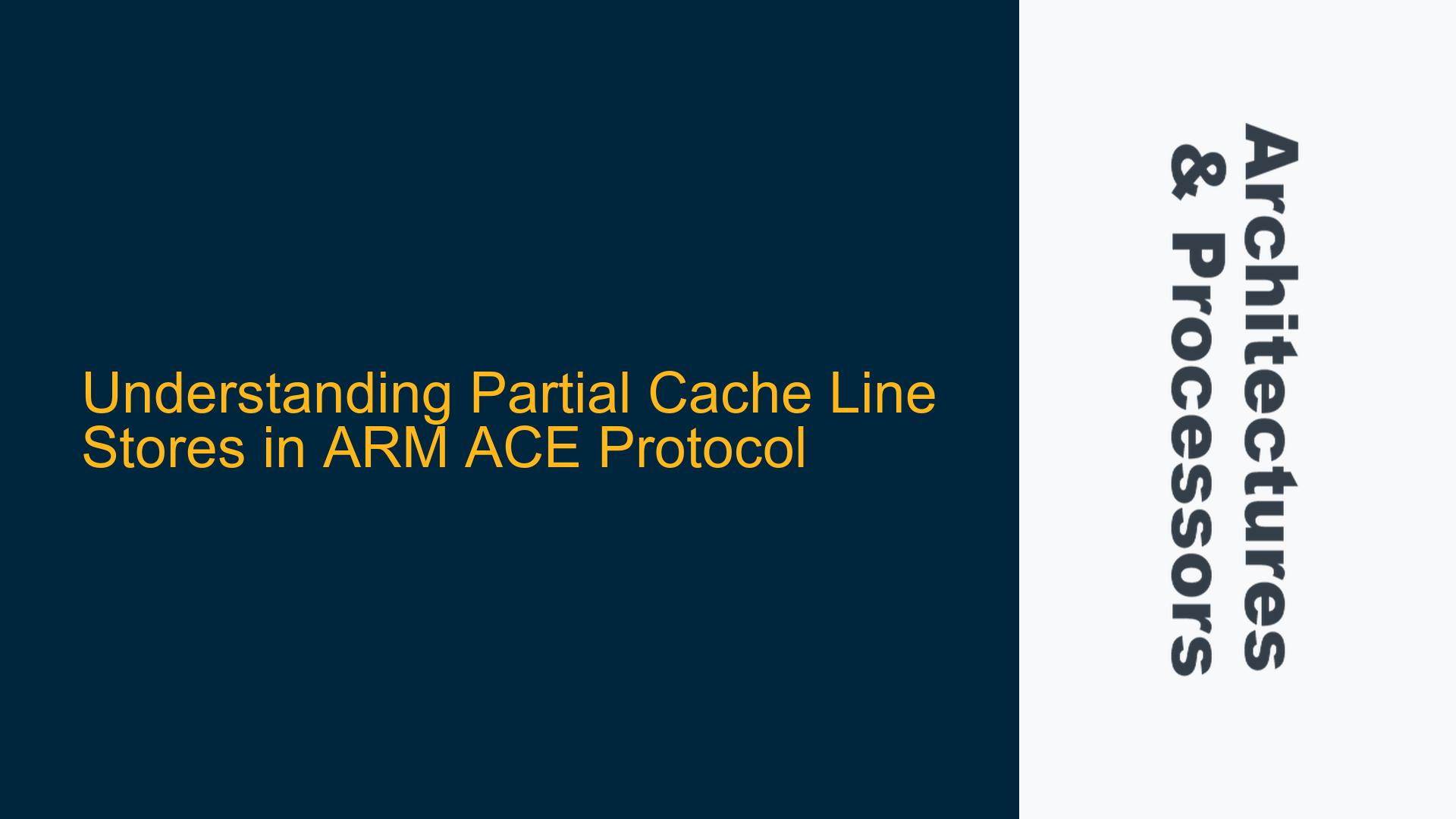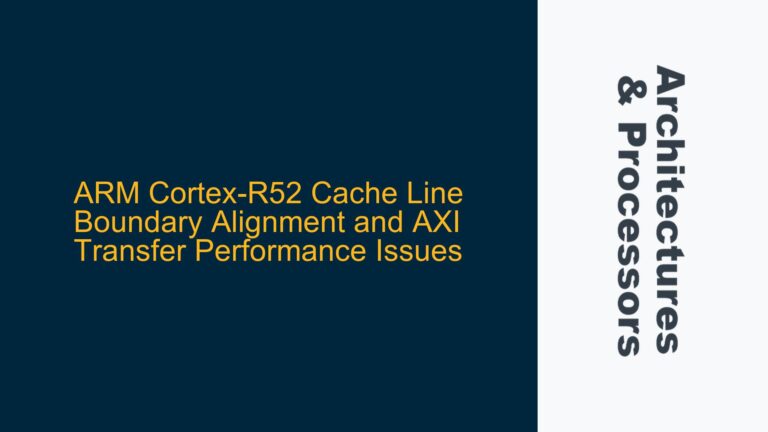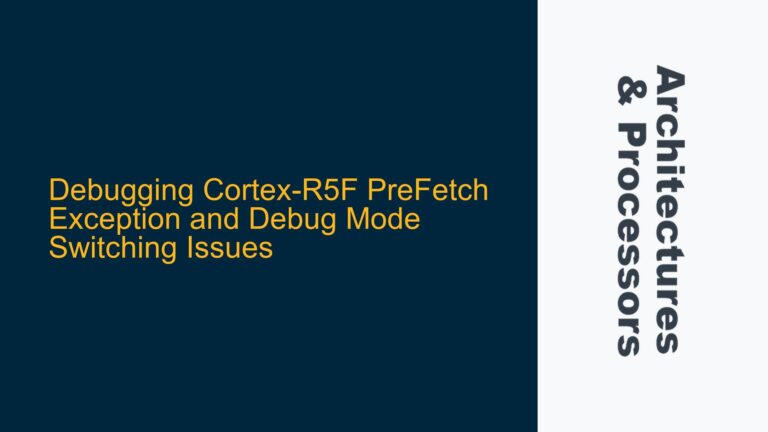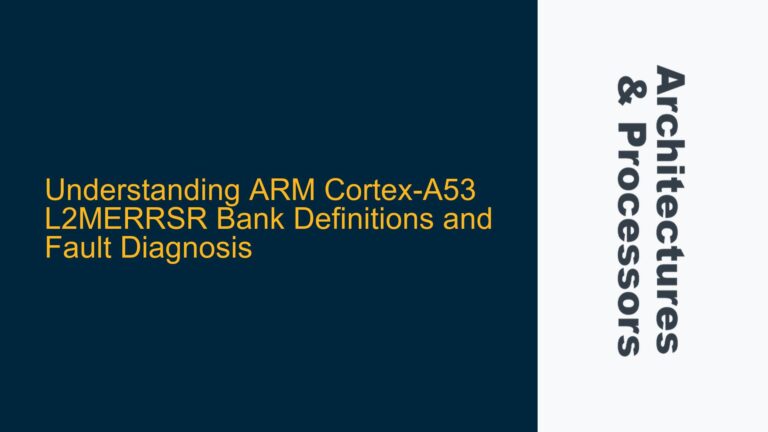ARM Cortex-A Series Cache Coherency and Partial Cache Line Stores
In ARM-based systems, particularly those utilizing the ARM Cortex-A series processors, cache coherency is a critical aspect of ensuring data integrity and system performance. The ARM ACE (AXI Coherency Extensions) protocol plays a pivotal role in maintaining cache coherency across multiple masters in a system. One of the more nuanced aspects of this protocol is the concept of a partial cache line store. This operation, while seemingly straightforward, involves a series of intricate steps that ensure data consistency across the system. Understanding how partial cache line stores work is essential for optimizing system performance and avoiding subtle bugs that can arise from improper cache management.
A partial cache line store occurs when a master (such as a CPU core) needs to write only a portion of a cache line, rather than the entire cache line. This scenario is common in many applications where data structures are smaller than the cache line size, or when only specific fields within a data structure need to be updated. However, the process of performing a partial cache line store is more complex than a full cache line store, as it requires the master to first obtain the existing data for the entire cache line before merging the new partial data. This ensures that the unmodified portions of the cache line remain intact and consistent with the rest of the system.
The ARM ACE protocol defines a specific sequence of transactions that must occur to perform a partial cache line store. This sequence involves the master issuing a ReadUnique transaction to obtain the current state of the cache line, followed by a write operation that updates only the relevant portion of the cache line. The interconnect and snooping components play a crucial role in ensuring that the correct data is retrieved and that the updated cache line is propagated to all relevant components in the system.
The Role of ReadUnique and Cache Line Merging in Partial Stores
The key to understanding partial cache line stores lies in the interaction between the master, the interconnect, and the snooping components. When a master needs to perform a partial cache line store, it must first obtain the current state of the cache line from the system. This is achieved through a ReadUnique transaction, which is a type of read operation that ensures the master obtains exclusive access to the cache line. The ReadUnique transaction is relayed through the interconnect to the snooping components, which are responsible for providing the current state of the cache line.
Once the master has obtained the current state of the cache line, it can then perform the partial store operation. This involves merging the new data with the existing data in the cache line. The master updates only the relevant portion of the cache line, leaving the rest of the data unchanged. The updated cache line is then written back to the system, ensuring that the changes are propagated to all relevant components.
The use of ReadUnique is critical in this process, as it ensures that the master has exclusive access to the cache line during the store operation. Without this exclusivity, there is a risk of data corruption due to concurrent accesses by other masters. The ReadUnique transaction also ensures that the cache line is in the correct state before the store operation is performed, which is essential for maintaining cache coherency.
The process of merging the new data with the existing data in the cache line is another critical aspect of partial cache line stores. This merging operation must be performed carefully to ensure that the unmodified portions of the cache line remain consistent with the rest of the system. Any errors in this process can lead to data corruption or inconsistencies, which can be difficult to diagnose and resolve.
Implementing Partial Cache Line Stores: Best Practices and Common Pitfalls
Implementing partial cache line stores in an ARM-based system requires a deep understanding of the ACE protocol and the underlying hardware architecture. One of the most common pitfalls is failing to properly handle the ReadUnique transaction, which can lead to data corruption or inconsistencies. It is essential to ensure that the master obtains exclusive access to the cache line before performing the store operation, and that the cache line is in the correct state before the merge operation is performed.
Another common issue is the improper handling of the merge operation itself. This operation must be performed with care to ensure that the unmodified portions of the cache line remain consistent with the rest of the system. Any errors in this process can lead to subtle bugs that are difficult to diagnose and resolve. It is also important to ensure that the updated cache line is properly propagated to all relevant components in the system, which requires careful management of the interconnect and snooping components.
To avoid these issues, it is recommended to follow best practices when implementing partial cache line stores. This includes carefully managing the ReadUnique transaction to ensure that the master obtains exclusive access to the cache line, and performing the merge operation with care to ensure that the unmodified portions of the cache line remain consistent. It is also important to thoroughly test the implementation to ensure that it behaves correctly under all conditions, including concurrent accesses by multiple masters.
In addition to these best practices, it is also important to be aware of the performance implications of partial cache line stores. While these operations are necessary in many cases, they can also introduce additional latency and overhead, particularly in systems with high levels of concurrency. Careful optimization of the implementation can help to minimize these performance impacts, but it is important to balance this with the need for data consistency and integrity.
In conclusion, partial cache line stores are a critical aspect of cache coherency in ARM-based systems, particularly those utilizing the ACE protocol. Understanding how these operations work, and how to implement them correctly, is essential for optimizing system performance and avoiding subtle bugs. By following best practices and being aware of common pitfalls, it is possible to implement partial cache line stores in a way that ensures data consistency and integrity, while minimizing performance impacts.






